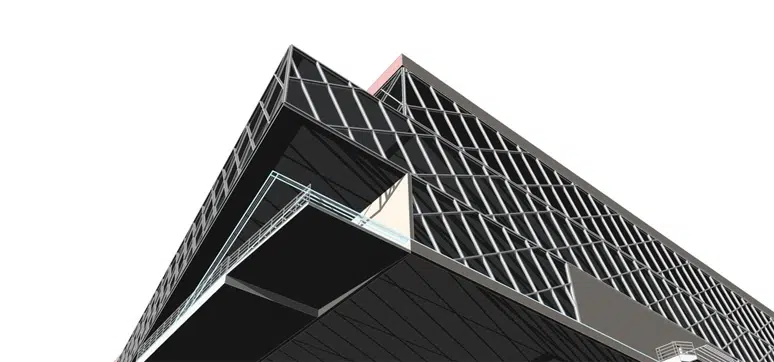How have you seen the adoption of BIM evolve in the field of architecture and façade design over the years?
I first used the BIM approach in 2010 for the Qatar National Library project. Back then, we initially used BIM mainly for 3D modeling. Over a decade, BIM has evolved significantly. From basic 3D modeling, it was then expanded to many dimensions, such as 4D, which deals with scheduling, 5D, which is used for cost estimating, 6D, which deals with sustainability, and 7D, which is used for facility management. The industry recently introduced the 8D, 9D, and 10D, which deal with safety, lean construction, and industry construction, respectively. These new BIM dimensions can assist architects and façade designers optimise project delivery, minimise waste, and enhancing façade design, production, and panel installation efficiency. The 10D will improve the manufacturing and assembly processes of façade elements, streamlining project delivery.
In your experience, what are the most significant advantages of using BIM in architectural and façade projects?
When I was leading the façade package of the KL118 project, BIM processes improved our design and site coordination and collaboration among project stakeholders. BIM also assisted us in enhancing the visualisation and communication within the project team to discuss technical design issues and clashes amongst trades, analyse design solutions, and simulate performance evaluation. In collaboration with ACONEX, BIM increased the project’s documentation and construction process efficiency.
What are the benefits of implementing BIM and parametric processes for façades?
BIM offers many benefits in parametric processes for façades, such as enhanced design exploration and optimisation, better coordination between architectural and engineering disciplines, and improved accuracy in panel fabrication and site installation. Also, BIM and parametric processes in façade design can accommodate flexibility in creating and designing complex geometries and performance requirements.
How do you see BIM integrating with other emerging technologies, such as augmented reality (AR) or virtual reality (VR), in the context of architectural and façade design?
Augmented reality (AR) and Virtual reality (VR) are emerging technologies with promising opportunities to provide an immersive experience for façade design review, planning, and panel installation. AR and VR enable stakeholders, architects, and façade engineers to visualise designs in a real-world context, assisting managers in making more effective informed decisions.
What challenges do you believe still exist in the widespread adoption of BIM in the architecture and façade industry?
Resistance to change within the traditional workflow in façade design, production, and installation management is a primary challenge, as it requires upfront investment in software platforms, workstations, and specialised training and skill development.
How can BIM contribute to sustainable design practices, particularly in façade materials and energy efficiency?
BIM can assist façade engineers in analysing façade materials and energy performance by simulating different design scenarios and evaluating environmental impacts. It helps me, as a façade engineer, make informed decisions to optimise energy efficiency and reduce the environmental footprint of building façade construction and operation.
Are there any emerging trends or technologies in BIM that you believe will significantly impact the future of architecture and façade design?
I believe that Cloud-based collaboration platforms, generative design algorithms, machine learning for predictive modeling, and advanced fabrication techniques such as robotic assembly and 3d printing will impact the future.
How technology can be used to reduce costs, reduce defects, and improve designs?
Automation can reduce design and production costs, reduce defects, and improve design processes. Real-time data analysis and streamlining workflow will also leverage the design process and digital fabrication methods of building envelope elements, enhancing a façade project’s quality.
What are the requirements and differences between BIM and parametric procedures?
BIM emphasises creating and managing digital representations of building information, including geometry, spatial relationships, and date attributes. The parametric procedure defines relationships and constraints within the design process to generate and manipulate geometric forms.
How 3D parametric modelling and automation can help meet customer demands?
It helps in the rapid iteration and customisation of design solutions. It improves the coordination and communication between project stakeholders. It can also help in optimising the cost, energy efficiency, and aesthetics.
Why does BIM appear to be fundamental in the current architectural design? How can architects use BIM to streamline complex façade designs?
BIM has become very important in current architectural design as it provides a comprehensive and integrated approach to architectural and façade design. Architects and façade engineers can use BIM to streamline complex façade design by incorporating parametric modeling techniques, conducting performance analysis, and facilitating seamless collaboration between project stakeholders.














